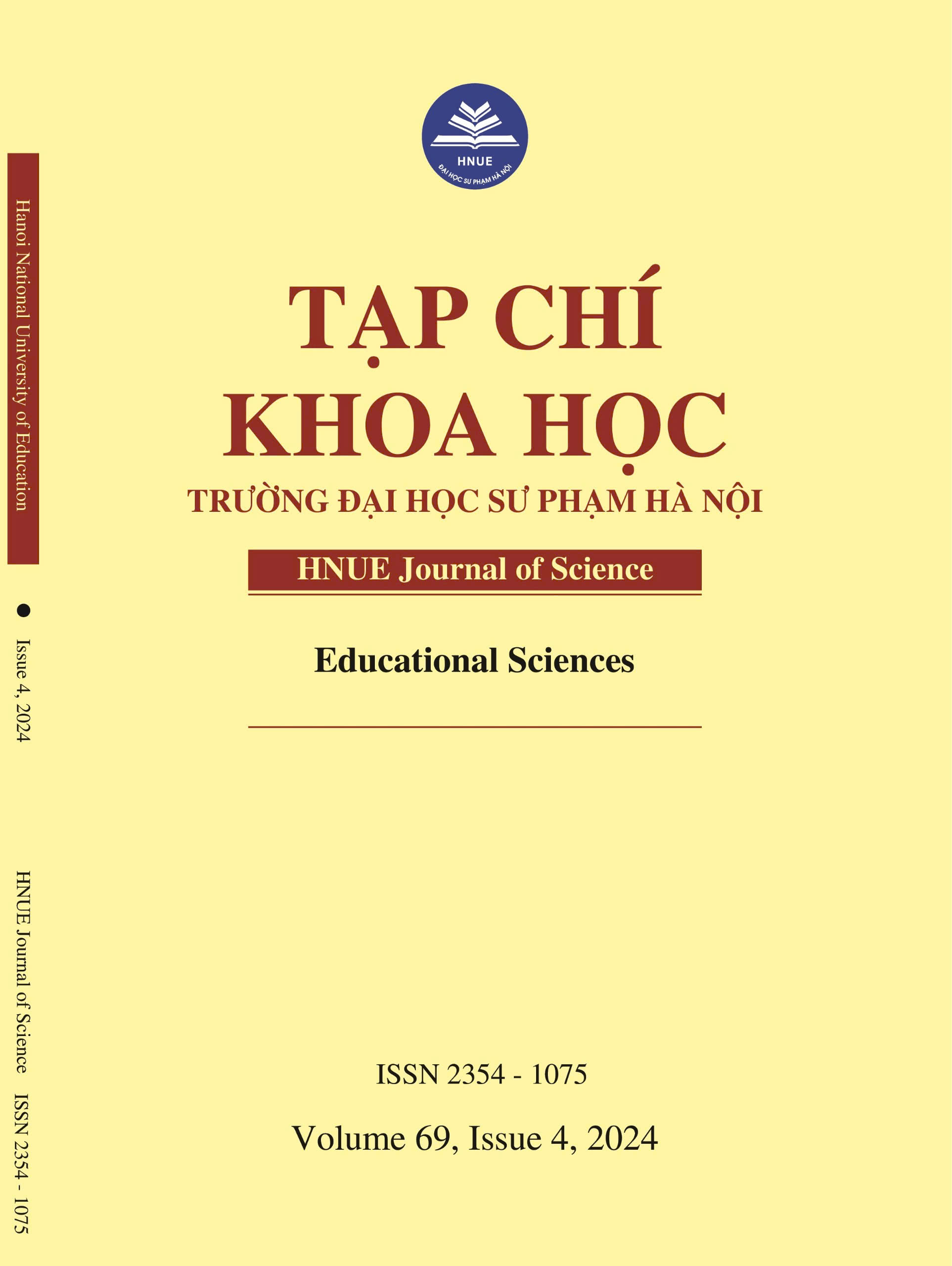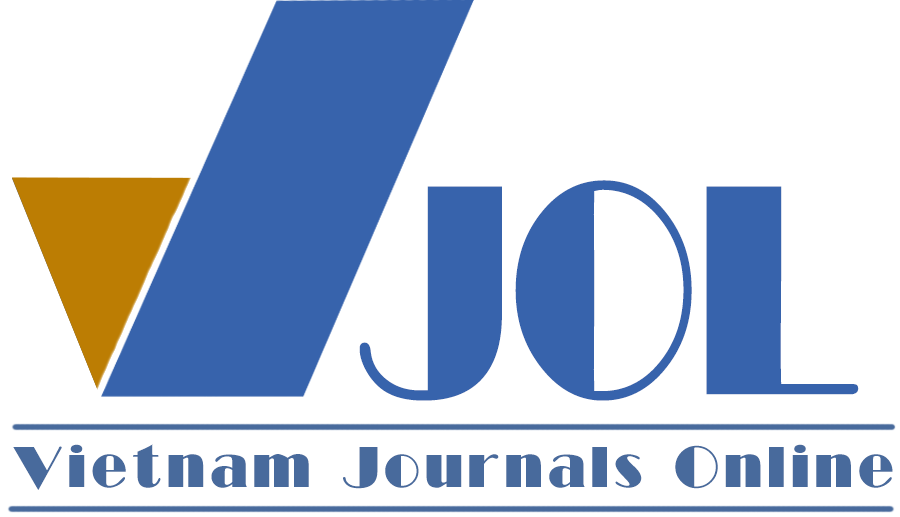THE REPRESENTATION OF CRITICAL THINKING IN THE TEXTBOOK SUPER MINDS LEVEL 3
DOI:
https://doi.org/10.18173/2354-1075.2024-0060Keywords:
critical thinking, document analysis, material evaluation, textbookAbstract
This study aims to examine the extent to which critical thinking (CT) is represented in the English textbook Super Minds Level 3 which has been used to teach English to the elementary level. The textbook analysis is based on two frameworks including the analytic categories of CT and the material evaluation checklists. More specifically, the CT framework Consists of categories such as clarification, perspective, prediction, reason and evidence, summary, and conclusion. Besides, the textbook was analyzed regarding aim and approaches, design and organization, language content, skills, and learners’ needs. The descriptive content analysis reveals that the language skills tasks in the textbook primarily emphasize reasoning and evidence, along with clarification, perspective, and prediction, while summary and conclusion are less represented. Additionally, the material evaluation checklists, covering aspects like aims and approaches, design and organization, language content, and learners' needs, provide supplementary insights into the CT characteristics of the textbook, though these aspects are discussed more briefly in descriptive details and mainly serve as a foundation in this study. Overall, the selected CT categories are found to be well-represented through the textbook evaluation, particularly in the language skills tasks, which significantly contribute to fostering learners' critical thinking skills.
Downloads
References
[1] Rao PS, (2019). The role of English as a global language. Research Journal of English, 4(1), 65-79.
[2] Feucht, F, (2023). Developing critical thinking in English language arts (ELA). LinkedIn. https://www.linkedin.com/pulse/developing-critical-thinking-english-language-arts-ela-feucht
[3] Manalo E & Sheppard C, (2016). How might language affect critical thinking performance? Thinking Skills and Creativity, 21, 41-49.
[4] Wu WCV, Marek M & Chen NS, (2013). Assessing cultural awareness and linguistic competency of EFL learners in a CMC-based active learning context. System, 41(3), 515-528.
[5] Liaw SS, (2008). Investigating students’ perceived satisfaction, behavioral intention, and effectiveness of e-learning: A case study of the Blackboard system. Computers & Education, 51(2), 864-873.
[6] Li L, (2016). Thinking skills and creativity in second language education: Where are we now? Thinking Skills and Creativity, 22, 267-272
[7] Van Laar E, Van Deursen AJ, Van Dijk JA & De Haan, J, (2017). The relation between 21st-century skills and digital skills: A systematic literature review. Computers in Human Behavior, 72, 577-588.
[8] Ministry of Education and Training [MoET], (2018a). Total general education curriculum.
[9] Ministry of Education and Training [MoET], (2018b). General education English curriculum.
[10] McPeck JE, (2016). Critical thinking and education. Routledge.
[11] Agusta AR & Pratiwi, DA, (2020, December). Learning Material Development Containing Critical Thinking and Creative Thinking Skills Based on Local Wisdom. In 6th International Conference on Education and Technology (ICET 2020) (pp. 43-57). Atlantis Press.
[12] Setyowati RN, Sari MMK & Habibah SM, (2018, October). Improving critical thinking skills of students through the development of teaching materials. In 1st International Conference on Social Sciences (ICSS 2018) (pp. 240-245). Atlantis Press.
[13] Puchta H, Gerngross G & Lewis P, (2012). Super Minds American English: Student’s Book. Cambridge: Cambridge University Press.
[14] Solihati N & Hikmat A (2018). Critical thinking tasks manifested in Indonesian language textbooks for senior secondary students. Sage Open, 8(3).
[15] Baig S, Siddiquah A & Javed, F, (2021). An analysis of the competency ‘reading and thinking skills’ in Grade VIII English textbook. Global Social Sciences Review, 5(1), 231-240. https://doi.org/10.31703/gssr.2020(V-I).24
[16] Es-Salhi A & Elfatihi M, (2019). Evaluating critical thinking skills in Moroccan EFL textbooks: Gateway to English 2 as a case. Higher Education of Social Science, 17(1), 13-22.
[17] Nguyen TTB, (2022). Critical thinking: What it means in a Vietnamese tertiary EFL context. English as a Foreign Language International Journal, 2(3), 4-23.
[18] Le CV, (2018). A critical analysis of moral values in Vietnam-produced EFL textbooks for upper secondary schools. Situating Moral and Cultural Values in ELT Materials: The Southeast Asian Context, 111-129.
[19] Dewey J, (1910). How We Think. Continuity, 3(40), 80.
[20] Ennis RH, (1993). Critical thinking assessment. Theory into Practice, 32(3), 179-186.
[21] Fisher R, (2001). Philosophy in primary schools: fostering thinking skills and literacy. Reading, 35(2), 67-73.
[22] Lipman M, (2003). Thinking in education. Cambridge University Press.
[23] Bassham G, Irwin W, Nardone H & Wallace JM, (2010). Critical thinking: A student’s introduction. McGraw-Hill.
[24] Paul R, & Elder L, (2019). The miniature guide to critical thinking concepts and tools. Rowman & Littlefield.
[25] Salmon AK & Barrera MX, (2021). Intentional questioning promotes thinking and learning. Thinking Skills and Creativity, 40. DOI: https://doi.org/10.1016/j.tsc.2021.100822
[26] Alsaleh NJ, (2020). Teaching Critical Thinking Skills: Literature Review. Turkish Online Journal of Educational Technology-TOJET, 19(1), 21-39.
[27] Ilyas H, (2015). Critical thinking: Its representation in Indonesian ELT textbooks and education (Doctoral dissertation, University of York).
[28] Cunningsworth A, (1995). Choosing your coursebook. Macmillan.
[29] Wilson, JULIET (2007). Reviewing the Cambridge Young Learners English (YLE) tests. Cambridge ESOL: Research Notes, 28, 2-4.







